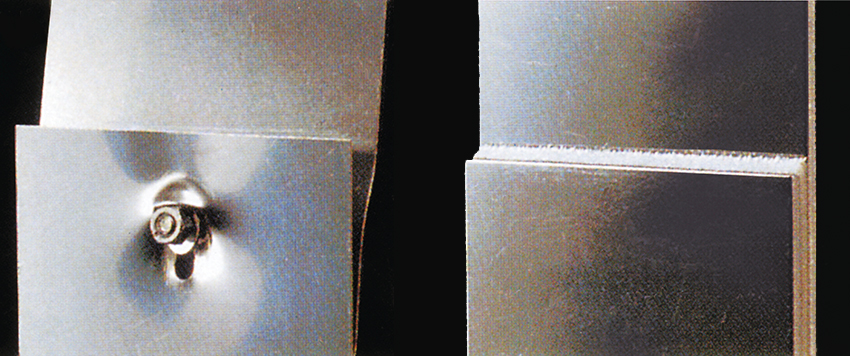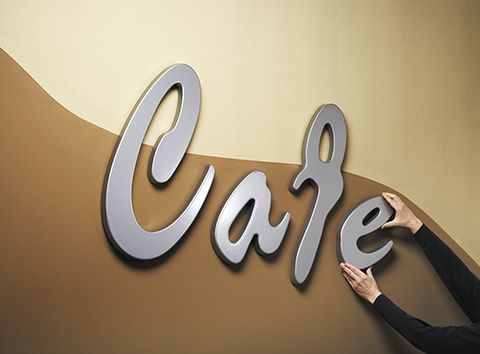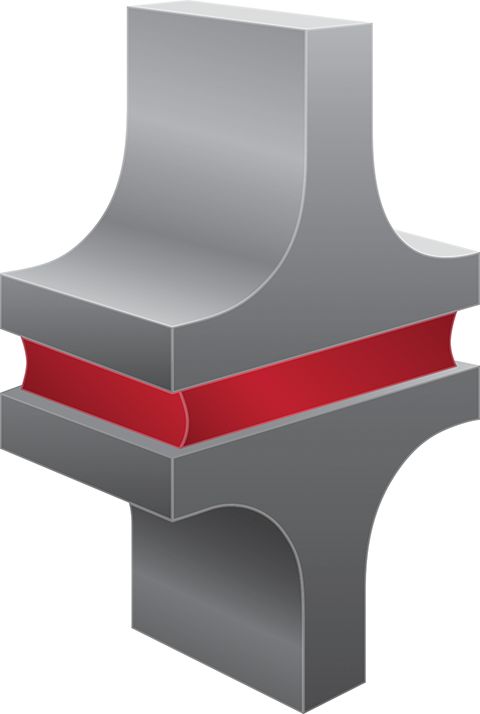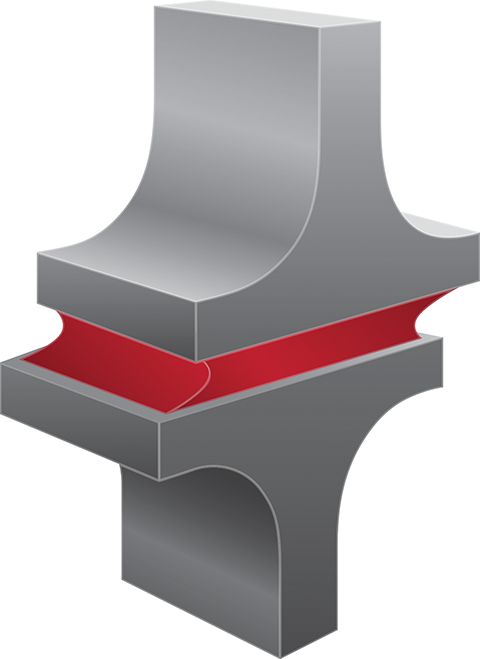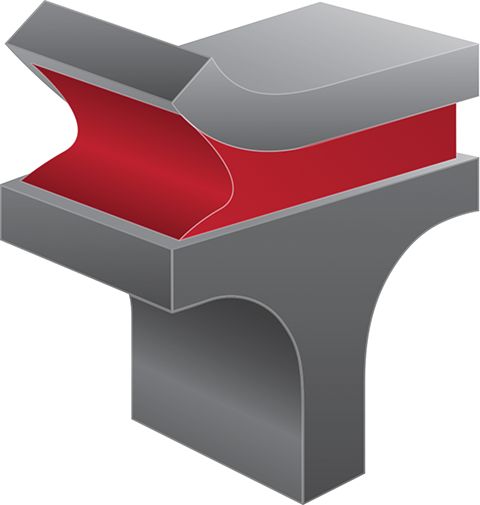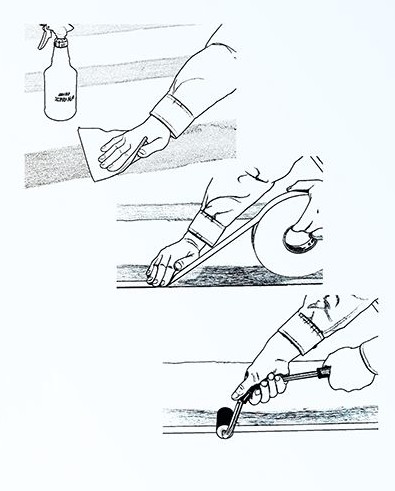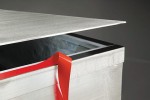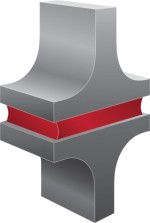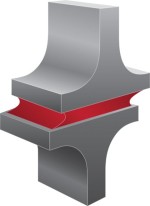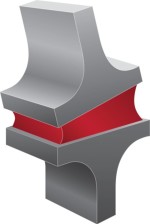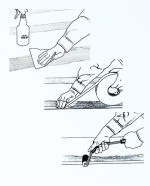Application techniques
Most substrates are best prepared by cleaning with a 50:50 mixture of isopropyl alcohol (IPA) and water prior to applying a high-strength acrylic foam tape (see Figure 10). Exceptions that may require additional surface preparation include:
- Heavy oils—A degreaser or solvent-based cleaner may be required to remove heavy oils or grease from a surface, followed by cleaning with IPA and water.
- Heavy dirt or oxidation—Abrasive cleaning may be needed to remove heavy dirt or oxidation (rust) before cleaning with IPA and water, so as to promote adhesion across an increased surface area.
- Porous surfaces—Most porous and fibrous materials—such as wood, particleboard and concrete—need to be sealed to provide a ‘unified’ surface for tape application.
- Unusual materials—Special surface preparation may be needed for glass and glass-like materials, copper and copper-containing metals and any plastic or rubber that contains components that may migrate (e.g. plasticizers).
Priming the surface with ‘adhesion promoters’ may also improve the initial and long-term bond for many materials, such as plastics and paints.
The recommended initial bonding temperature for most acrylic foam tape applications is 15 C (60 F) or higher, with the ideal range between 21 and 38 C (70 and 100 F), allowing the pressure-sensitive adhesives to flow viscously and achieve full substrate contact. For lower-temperature initial bonding, down to 0 C (32 F), special products will be needed. Once properly bonded, however, low-temperature ‘holding’ is generally satisfactory.
Bond strength depends on the amount of adhesive-to-surface contact, which in turn depends on application pressure. Firmer pressure helps develop greater contact and, thus, improve bond strength. Typically, good surface contact can be attained by applying enough pressure to the substrates to ensure the tape itself experiences approximately 100 kPa (15 psi). Rigid surfaces, it should be noted, may require two to three times that—i.e. 200 to 300 kPa (30 to 45 psi)—just to ensure the tape experiences 100 kPa (15 psi).
While acrylic foam tapes bond on contact for immediate handling, the strength of their bond increases with time, as the adhesive flows onto and ‘wets out’ the surfaces. At room temperature, approximately 50 per cent of ultimate bond strength will be achieved after 20 minutes, 90 per cent after 24 hours and 100 per cent after 72 hours. The adhesive’s flow will be faster at higher temperatures and slower at lower temperatures.
The right combination
Many signs today have greater visual impact because they were assembled with strong, viscoelastic acrylic foam tapes, providing a seamless esthetic. What’s more, they are proving highly durable, with a bond that will last under even the harshest of environmental conditions.
Kejian Zhang is an advanced application development and technical services specialist for the industrial adhesive and tape division of 3M Canada, which supplies a wide range of products for the sign and graphics industry. For more information, contact him via e-mail at kzhang3@mmm.com.



